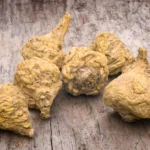Introduction:
When it comes to the topic of nutrition, most of us are familiar with the importance of macronutrients like carbohydrates, proteins, and fats, and micronutrients like vitamins and minerals. However, there’s one nutrient that often flies under the radar, despite its significant health benefits – N-acetyl-glucosamine (NAG).
In this blog post, we’ll explore what NAG is, why it’s essential for our bodies, and how we can get more of it in our diets.
N-acetyl-glucosamine is a type of amino sugar that’s derived from glucose. It’s naturally found in the shells of shellfish, such as crabs and lobsters, and in some fungi. In the body, NAG is involved in many essential biological processes, including cell growth, repair, and regeneration.
One of the unique properties of NAG is its ability to form chitin, a tough and flexible polysaccharide found in the exoskeletons of arthropods, such as insects and crustaceans. Chitin is also found in the cell walls of fungi and some algae, and it’s been used for centuries in traditional medicine for wound healing and as an antimicrobial agent.
Research has shown that NAG has many potential health benefits. Here are some of the most notable ones:
- Joint health: NAG is a precursor to hyaluronic acid, a vital component of synovial fluid, which helps lubricate and cushion our joints. Studies have found that supplementing with NAG can improve joint function and reduce pain and inflammation in people with osteoarthritis.
- Gut health: NAG is a prebiotic, which means it feeds the beneficial bacteria in our gut. By promoting the growth of these bacteria, NAG can improve gut health, reduce inflammation, and enhance the immune system.
- Skin health: NAG is a natural exfoliant and a humectant, which means it helps retain moisture in the skin. It’s been shown to improve the appearance of fine lines, wrinkles, and hyperpigmentation, and it may also have antimicrobial properties that can help fight acne and other skin infections.
- Immune health: NAG has been shown to stimulate the production of cytokines, which are immune system molecules that help fight infections and inflammation. It may also have antiviral properties and help prevent the attachment of viruses to host cells.
While NAG is naturally found in some foods, it’s not a nutrient that’s commonly tracked or included in nutritional labels. Here are some of the best food sources of NAG:
- Shellfish: As mentioned earlier, shellfish like crab, lobster, and shrimp are rich in NAG. However, it’s important to note that shellfish allergies are relatively common, and some people may also have an intolerance to chitin.
- Mushrooms: Some types of mushrooms, such as shiitake and maitake, contain small amounts of NAG.
- Bone broth: Bone broth is a rich source of many nutrients, including NAG. It’s made by simmering bones, cartilage, and other connective tissues for an extended period, which releases collagen and other beneficial compounds.
- Supplements: NAG supplements are widely available and can be a convenient way to boost your intake of this nutrient. However, as with any supplement, it’s essential to choose a reputable brand and speak with your healthcare provider before starting.
In conclusion, N-acetyl glucosamine is a natural compound that has various health benefits. It is known for its anti-inflammatory and antioxidant properties, making it useful in managing conditions such as osteoarthritis, inflammatory bowel disease, and skin conditions. Additionally, N-acetyl glucosamine plays a role in promoting skin health by improving hydration and reducing hyperpigmentation. While further research is needed to fully understand the benefits of N-acetyl glucosamine, its potential therapeutic applications make it a promising area of study in the field of medicine and healthcare.








